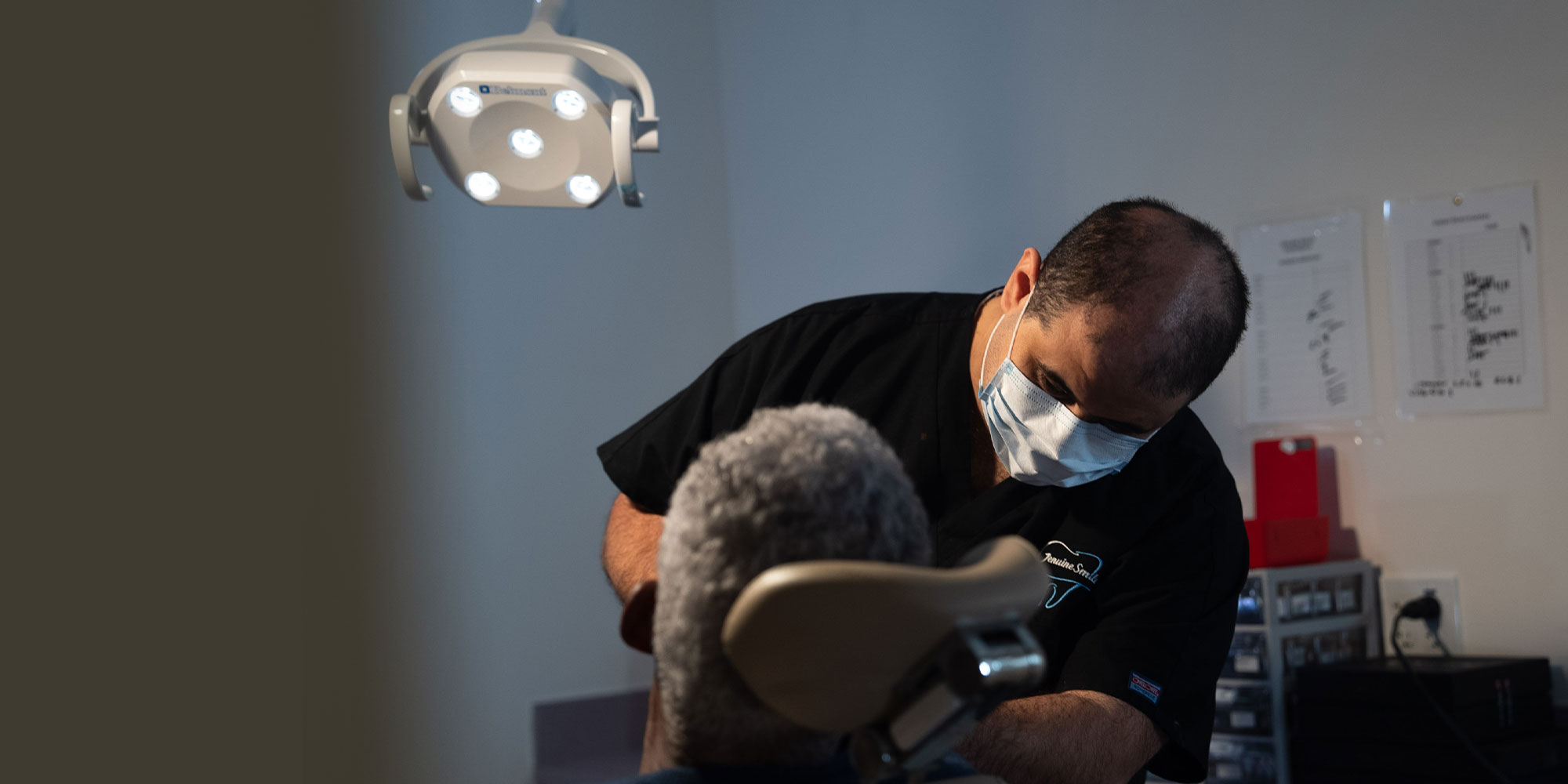
At Genuine Smiles, we understand how painful and embarrassing missing, decaying, and severely damaged teeth can be. These issues can affect your ability to eat, speak, and smile confidently. That’s why we offer oral surgery procedures designed to address these problems and help create a strong foundation for your healthiest smile.
Whether you need to remove wisdom teeth, repair damage, or prepare for dental implants, our team is here to help! With convenient locations in Livingston Township, Hackensack, Kearny, and Jersey City, NJ, we make accessing expert care easy and stress-free.
Our team at Genuine Smiles is dedicated to providing smooth, comfortable, and efficient oral surgery procedures. With extensive training, clinically advanced techniques, and cutting-edge technology, we ensure you and your family receive the highest standard of care. To enhance your comfort, we offer customized sedation dentistry options tailored to your specific needs, allowing you to relax throughout your procedure.
Whether you need a tooth extraction or a more complex surgery, our commitment to patient-focused care ensures a positive experience. Trust our expertise; let us help you achieve optimal oral health with precision and compassion.

Tooth extractions are necessary for removing damaged or problematic teeth that cannot be saved. Whether you’re dealing with severe decay, trauma, or overcrowding, our team provides gentle and effective care.
We focus on preserving surrounding teeth and ensuring minimal discomfort during and after the procedure. Our expert oral surgeons make the process seamless, helping you restore your oral health.
Bone grafting is essential for patients with insufficient jawbone density and is often required before dental implant surgery. This procedure strengthens the bone and creates a stable foundation for implants. We ensure optimal results using advanced techniques, allowing you to achieve a strong, functional smile. At Genuine Smiles, our skilled team makes bone grafting a comfortable process.
Ridge augmentation restores the natural contour of your jawline after tooth loss or damage. This procedure enhances aesthetics and functionality, improving your ability to receive dental implants. Our team utilizes advanced methods to achieve precise and natural-looking results. Ridge augmentation helps create the ideal conditions for long-term oral health and stability.
Dental implant surgery is a transformative solution for replacing missing teeth with durable, natural-looking alternatives. We precisely place implants, ensuring a secure fit and optimal integration with the jawbone. This procedure restores function and aesthetics, giving you a smile that feels and looks like your own. At Genuine Smiles, we’re committed to providing exceptional dental implant care.
Wisdom teeth extractions are often necessary to prevent overcrowding, pain, and infection. Our team is experienced in removing wisdom teeth efficiently and safely, minimizing discomfort during recovery. Whether your wisdom teeth are impacted or causing complications, we ensure a smooth and comfortable procedure. We also offer affordable wisdom tooth extractions and flexible payment options to make this essential care accessible to everyone.
A sinus lift adds bone to the upper jaw and creates the necessary support for dental implants. This procedure is crucial for patients with insufficient bone in the molar or premolar areas. Our team utilizes advanced techniques to perform sinus lifts with precision, ensuring optimal outcomes for implant placement.